This article needs additional citations for verification .(April 2024) |
This is a list of castles in Estonia . [1] This list does not include palaces and manor houses, which are listed in a separate article.
This article needs additional citations for verification .(April 2024) |
This is a list of castles in Estonia . [1] This list does not include palaces and manor houses, which are listed in a separate article.
| Image | Name | Construction date | Location | Current state |
|---|---|---|---|---|
 | Helme Castle | 14th century | Helme | Ruin |
 | Karksi Castle | 14th century | Karksi-Nuia | Ruin |
 | Keila Castle | 15th-16th century | Keila | Ruin |
 | Kursi Castle | 15th-16th century | Puurmani | Ruin |
 | Laiuse Castle | 14th century | Laiusevälja | Ruin |
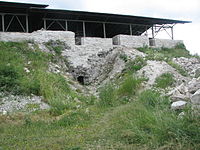 | Maasilinna Castle | 1345 | Maasi | Ruin |
 | Hermann Castle | 1256 | Narva | Partially preserved |
 | Paide Castle | 1265-1266 | Paide | Partially preserved |
 | Põltsamaa Castle | 1272 | Põltsamaa | Ruin |
 | Pärnu Castle | 1265 | Pärnu | Partially preserved |
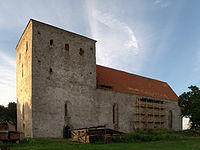 | Pöide Castle | 13th century | Pöide | Partially preserved |
 | Rakvere Castle | 13th century | Rakvere | Partially preserved |
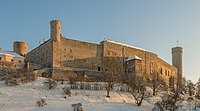 | Toompea Castle | 13th century | Tallinn | Partially preserved |
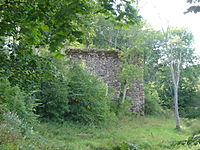 | Tarvastu Castle | 13th century | Tarvastu | Ruin |
 | Toolse Castle | 1471 | Toolse | Ruin |
 | Vasknarva Castle | 1349 | Vasknarva | Ruin |
 | Viljandi Castle | 1224 | Viljandi | Ruin |
| Image | Name | Construction date | Location | Current state |
|---|---|---|---|---|
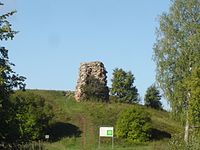 | Kirumpää Castle | before 1322 | Kirumpää | Ruin |
 | Otepää Castle | ? | Otepää | Ruin |
 | Rõngu Castle | 14th century | Rõngu | Ruin |
| Tartu Castle | 8th century | Tartu | Ruin | |
| Uue-Kastre Castle | 14th century? | Võnnu | ? | |
| Vana-Kastre Castle | 14th century? | Vana-Kastre | ? | |
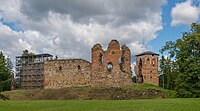 | Vastseliina Castle | 1342 | Vastseliina | Ruin |
| Image | Name | Construction date | Location | Current state |
|---|---|---|---|---|
 | Haapsalu Castle | 13th century | Haapsalu | Partially preserved |
 | Koluvere Castle | 13th century | Koluvere | Partially preserved |
 | Kuressaare Castle | 1380's | Kuressaare | Partially preserved |
 | Lihula Castle | 1211 | Lihula | Ruin |
| Image | Name | Construction date | Location | Current state |
|---|---|---|---|---|
| Kiviloo Castle | 1413 | Kiviloo | Ruin | |
 | Porkuni Castle | 1479 | Lihula | Partially preserved |
| Image | Name | Construction date | Location | Current state |
|---|---|---|---|---|
 | Angerja Castle | around 1400 | Angerja | Ruin |
| Äntu Hill Fort | Lääne-Viru County, Äntu | |||
 | Glehn Castle | 1886 | Nõmme | Built by Nikolai von Glehn |
| Iru Hill Fort (Iru hill fort) | Harju County | |||
| Jäneda hillfort | Lääne-Viru County | |||
 | Järve Castle | ? | Järve | Ruin |
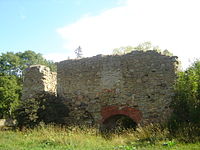 | Kalvi Castle | 1485 | Kalvi | Ruin |
| Kavilda Castle | 1354 | Mõisanurme | Ruin | |
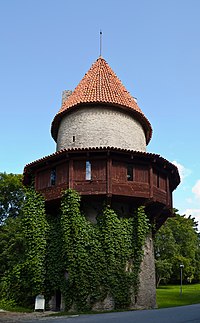 | Kiiu Castle | 1520 | Kiiu | Partially preserved |
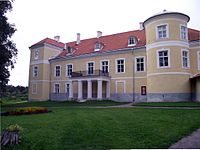 | Kiltsi Castle | 1466 | Kiltsi | Partially preserved |
 | Purtse Castle | 16th century | Purtse | Partially preserved |
 | Sangaste Castle | 1881 | Sangaste | Partially preserved |
| Äntu Hill Fort | Lääne-Viru County, Äntu | |||
| Vaabina Castle | 16th century (?) | Vaabina | Destroyed | |
 | Vao Castle | 14th century | Vao | Partially preserved |
 | Vääna Castle | 1325 | Vääna | Ruin |
 | Vooremägi | ? | Purtsi | Ruin? |

A manor house was historically the main residence of the lord of the manor. The house formed the administrative centre of a manor in the European feudal system; within its great hall were usually held the lord's manorial courts, communal meals with manorial tenants and great banquets. The term is today loosely applied to various English country houses, mostly at the smaller end of the spectrum, sometimes dating from the Late Middle Ages, which currently or formerly house the landed gentry.

Estonian History Museum is a museum about the history of Estonia in Tallinn. It was initially established by the pharmacist Johann Burchart, who ran the town hall pharmacy known as the Raeapteek.

Ahja is a small borough in Põlva Parish, Põlva County in southeastern Estonia. Named after the Ahja River, it is located 191 kilometers (119 mi) southeast of Tallinn and about 16 kilometers (9.9 mi) north of Põlva.
This article covers the architecture of Estonia.

Sõmerpalu is a small borough in Võru County, Estonia. Between 1991–2017, until the administrative reform of Estonian local governments, the small town was the administrative center of Sõmerpalu Parish. As of 2017, it belongs to Võru Parish.

Suuremõisa is a village in Hiiumaa Parish, Hiiu County in northwestern Estonia.
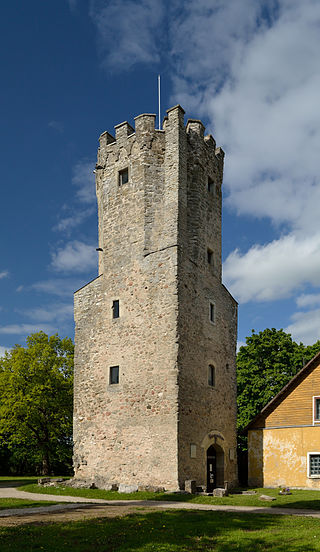
Porkuni is a village in Tapa Parish, Lääne-Viru County, in northern Estonia. The settlement is located around the Lake Porkuni, which is the source of the Valgejõgi River.
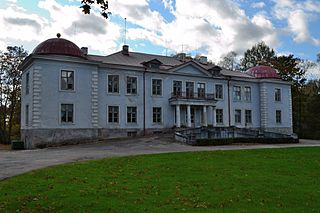
Maidla is a village in Rapla Parish, Rapla County in northwestern Estonia. Between 1991 and 2017 the village was located in Juuru Parish.

Loona is a village in Saaremaa Parish, Saare County in western Estonia.

Kiltsi Manor is a knight’s manor in Väike-Maarja Parish, present day Lääne-Viru County, Estonia. It is number 16079 on the Estonian State Register of Cultural Monuments.

Glehn Castle is a castle on the hillside of Nõmme, part of Tallinn, Estonia.

Taagepera Castle is a mansion in Taagepera village, Helme Parish, Valga County, Estonia. It was registered as a national cultural monument on 27 September 1999.

Puurmani manor is a historical manor located in the village of Puurmani, Jõgeva County, Estonia. The manor is protected by the Estonian government as a cultural heritage object. The object was listed on 23 November 1999, and has the number 23988.
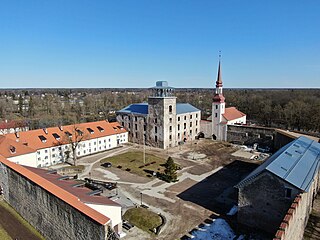
Põltsamaa Castle, also Põltsamaa Order Castle,, is a castle in Põltsamaa, Jõgeva County, in eastern Estonia.

Holdre is a village in Tõrva Parish, Valga County in Estonia.